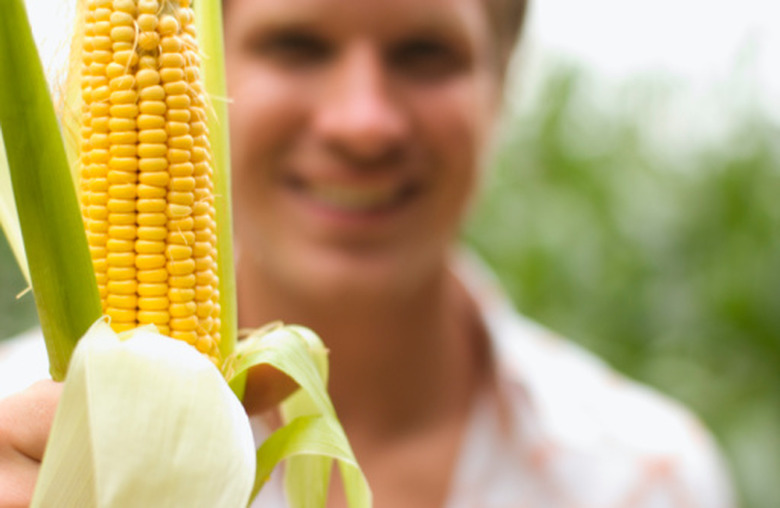Once Corn Tassles, How Long Until The Cobs Are Ripe?
Corn can be grown in a home garden, although it often require a lot of space and always require more than one plant in order to be grow successfully. Corn plants need to pollinate each other in order to become fertile. They benefit from being planted close together to help encourage better fertilization, and thus a more bountiful harvest. When the tassles of the corn plant emerge, the plant is entering the fertilization stage.
Silking
Silking is the stage when the tassles or corn silk emerges from the ear of the corn. This usually occurs around 55 to 66 days after the corn seedling emerges from the ground. At this stage, the corn plant is ready to be pollinated. The pollen from the top stamen of a corn plant mixes with the silks from the ears of the corn to fertilize the corn. The more silks that are fertilized, the more kernels there will be per ear.
- Corn can be grown in a home garden, although it often require a lot of space and always require more than one plant in order to be grow successfully.
- The pollen from the top stamen of a corn plant mixes with the silks from the ears of the corn to fertilize the corn.
Blistering
Blistering is the next stage of corn development. After pollination, the kernels begins forming within the ears of the corn cob. The cob will be almost full size, and the silks of the ear will begin to darken and dry out. This stage begins around 12 days after pollination has occured.
Milking
Milking is the stage when the corn ears are ready to be harvested. This stage usually occurs around 20 days after silking or fertilization of the corn. At this point, the kernels will have begun to yellow on the outside and will contain a runny, milky liquid inside. The kernels will be almost fully grown, and they will be at an 80 percent moisture level.
- Blistering is the next stage of corn development.
- Milking is the stage when the corn ears are ready to be harvested.
Denting
Denting is the process that occurs to corn kernels if the ears are left on the plant after the milking stage has passed. As the starch levels increase within each corn kernel, a dent will appear on the top of each kernel. At 36 days after fertilization or silking, the kernels will almost all be dented or in the process of denting. This is one way of drying corn on the plant.
